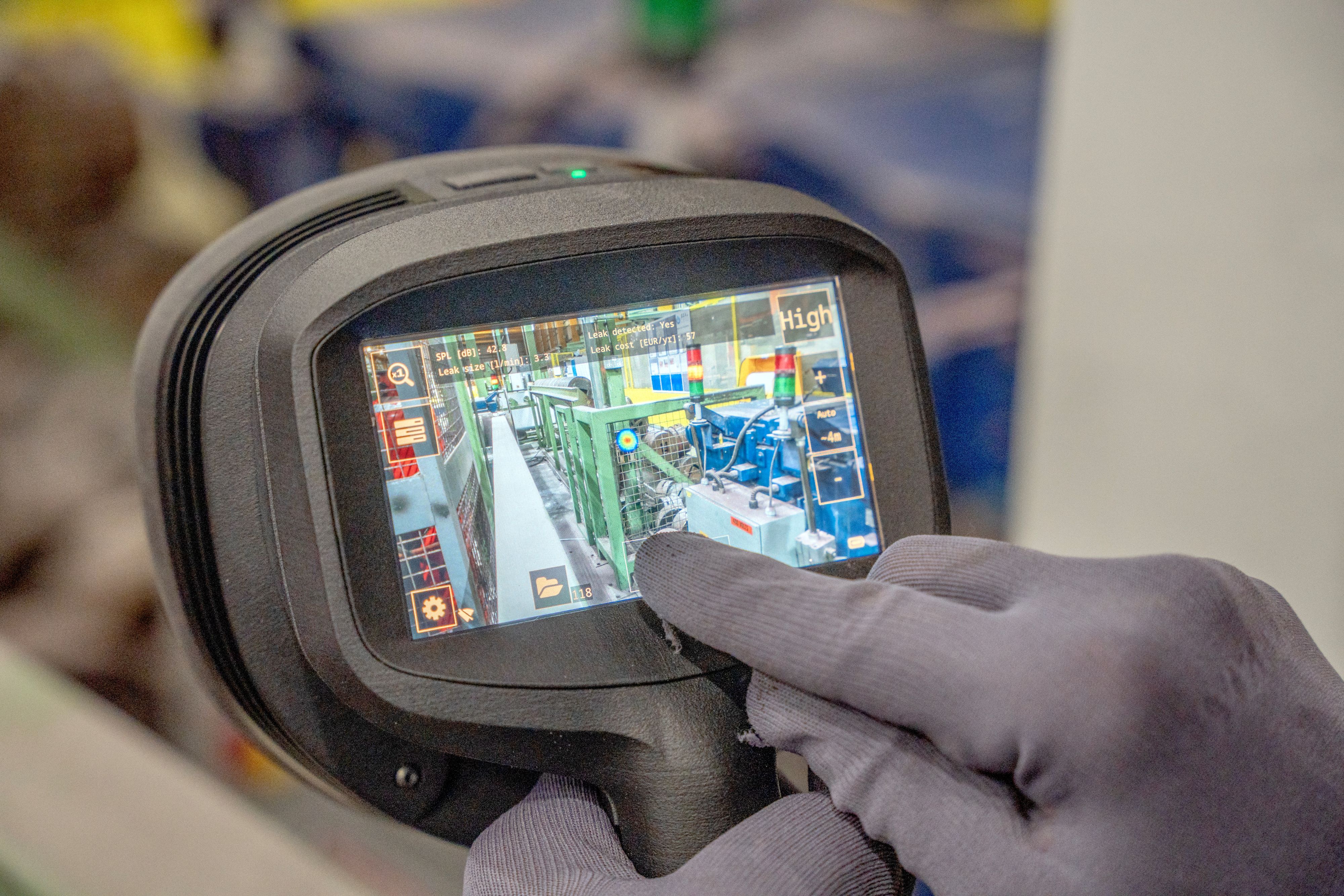Are the compressed air leaks a problem? How much do industrial gas leaks matter? How long until worn bearings fail?
Lets explore these subjects in more detail, one at a time:-
Compressors are often situated at one end of a factory, connected to the equipment they power via pipework that typically runs through troughs or gantries, out of harms way. It is common to see multiple connections and many tee-pieces along a compressed air installation connecting pneumatic machinery and air tools along the length of a factory. It is rare for the majority of the compressed air circuit to be inspected unless there is a significant issue which is causing disruption to the production process. Afterall, if its not broke, then there is no need to fix it, right?
Similarly for industrial gasses, which are typically installed and refilled in fixed locations close to where the gas is used. These industrial gasses are connected into the production process by protected pipework that is generally ignored after the initial installation unless a significant fault arises.
While it is possible to monitor bearing health using a variety of techniques, the vast majority of bearings are ignored, especially if they are situated in difficult to access locations for example, at height, above machinery requiring production to stop in order to safely inspect their condition.
These three examples are all situations where acoustic imaging can play a role in better informing business about their equipment, both from an Energy Saving and a Preventative Maintenance perspective.
FLIR have launched the Si2 acoustic imaging camera which is able to hear the faults associated with the equipment mentioned, even within noisy operating factories when compressed air leaks, gas leaks or bearing faults are drowned out by the noise of louder production machinery.
Leaks are automatically identified and superimposed onto the 5” LCD colour screen, along with additional information such as the severity of a leak, the predicted cost to a business, or in the case of bearings, the severity of the developing bearing fault. All of this information can be reviewed on-camera, in cloud-based software, or in FLIR Thermal Studio reporting software.
So what? Air leaks are responsible for £1.4 Bn of wasted electricity consumption in the UK alone, repairing these leaks instantly lowers electricity usage associated with compressors and pumps, regaining lost margin for your production process and business profitability.
Gas leaks can be dangerous depending on the gas, but are always significantly more expensive due to the cost to purchase gasses compared to the cost of running air compressors. Repairing these leaks instantly improves the sustainability of a factory and certainly impacts the profitability immediately.
Bearings can be monitored with regular inspections, allowing replacement maintenance work to be scheduled when convenient during periodic shut-down, or addressed more urgently if needed. Most importantly, these insights into bearing condition allows the panned replacement rather than the alternative, which is responding to unexpected failures.
Two of the worst feelings are the panic when a production line stops unexpectedly, and the feeling of losing money. The FLIR Si2 is designed to alleviate both of these feelings by effortlessly identifying leaks that wate electricity and drain profits from a business, and helping to predict maintenance schedules, avoiding downtime.
FLIR offer consultations and in-person demos, with no obligation, to demonstrate the Si2 acoustic camera, allowing you to see first-hand how easy it can be to improve your manufacturing or production operation.




